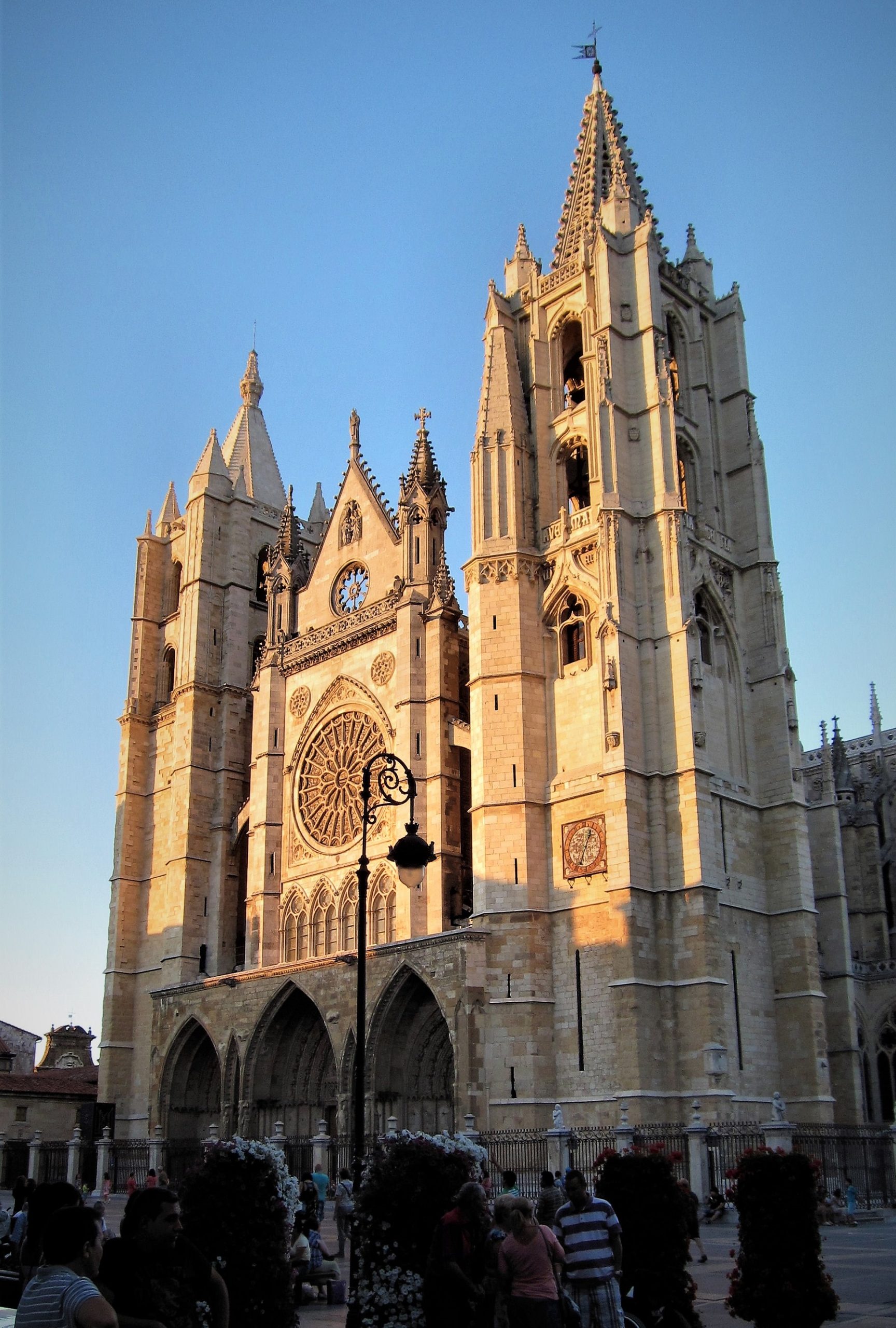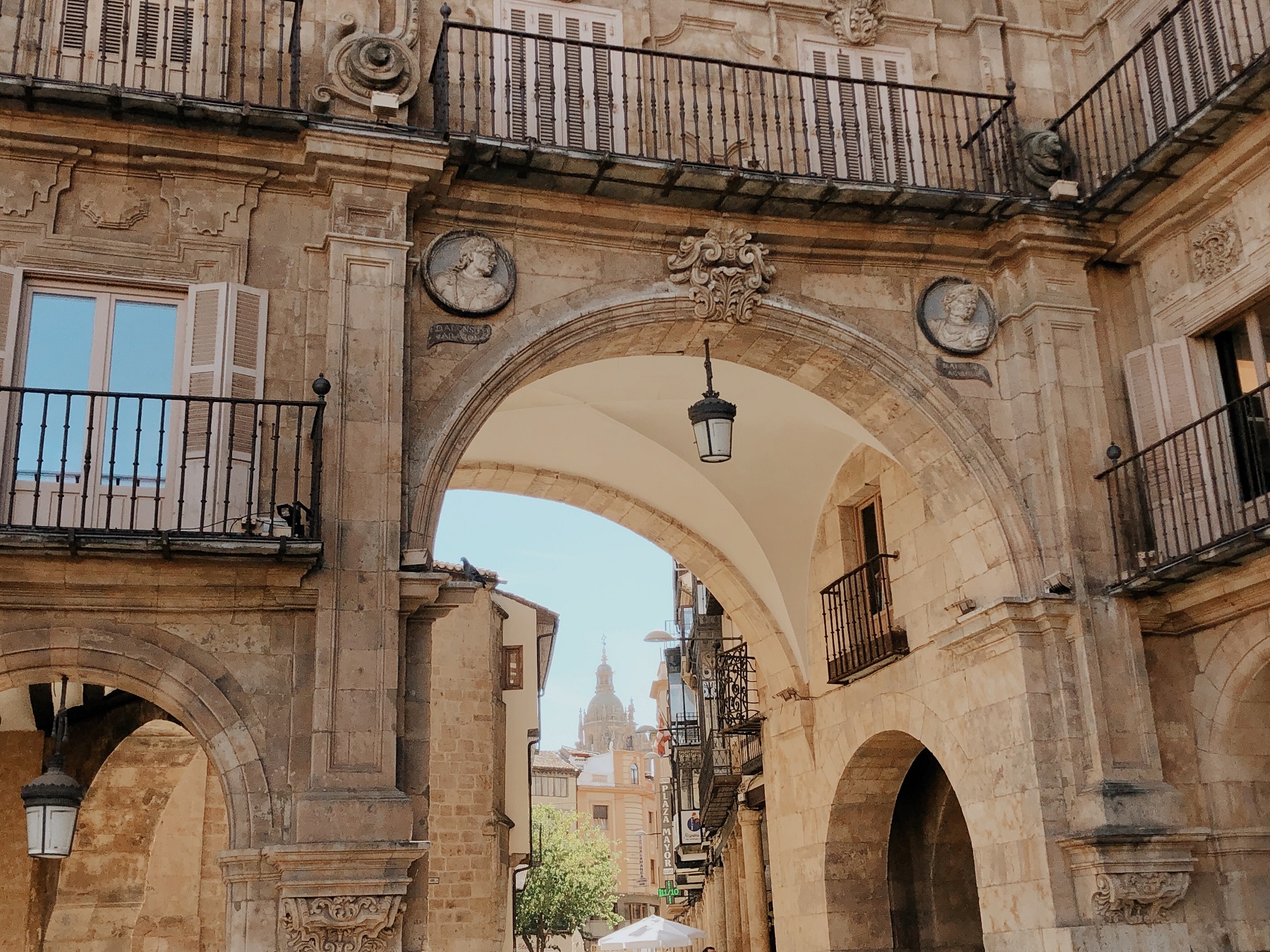Quick search
CTRL+K
Quick search
CTRL+K

Valladolid is one of the larger cities in the Spanish region of Castilla y León, and it is a city with an interesting history. In the 7th century, the Moorish conquest came to this region, which was reconquered by Christian Spain in the 9th century. At the end of the 11th century, Count Pedro Ansúrez made the city his residence and thus founded the modern Valladolid, to which Ansúrez initiated a repopulation. In 1469, Isabella I and King Ferdinand of Aragon were married in Valladolid, which in the 15th century was the residence city in Castile. Prosperity partly continued in the 16th century, but the city was hit by the great fire in 1561. In the years 1601-1606, Valladolid was the capital of the Spanish monarchy, but after a plague epidemic the capital was moved back to Madrid.
In today’s Valladolid, you can enjoy a stroll in the center starting at the Plaza Mayor square, which was laid out as the first Spanish square with fine balconies to witness celebrations following the pattern that has since been laid out similarly in, for example, Madrid. There is a statue of Valladolid’s founder, Pedro Ansúrez, at Plaza Mayor where you can see the city’s town hall as well. It was completed in 1908 with inspiration from the Beaux-Arts era. All the buildings around the square have arcades on the ground floor, and opposite the town hall you will find the Teatro Zorrilla.
You can also go for a walk in the large park Campo Grande, where there are many lovely pathways, lakes and monuments such as the fountains La Pérgola and Fuente de la Fama. Along the north-west side of the park, you can see the Academia de Caballeria building from the 1920s, which stands in monumental historicist architecture. Opposite is the large Augustinian monastery, which today is home to the Museo Oriental that exhibits of one of Spain’s finest collections of oriental artifacts from the past two thousand years. Close to this and southeast of the park stands Valladolid’s large Columbus monument, erected in 1905.
It is easy to notice many other beautiful buildings in Valladolid, such as the city’s cathedral, which was built from 1589 and consecrated in 1668. The cathedral was intended to be more than twice as large as realized, and it was supposed to have been Spain’s largest church. It didn’t happen, but the cathedral is still worth seeing. You can also see the Renaissance mansion Palacio de Santa Cruz from the 15th century, which today serves as the rector’s office for the city’s university. The building Colegio de San Gregorio was constructed in the 15th century as a college, and it is a beautiful late Gothic building complex, which today is open as a national sculpture museum. The museum has a fine collection of paintings and sculptures.
There are several other interesting museums in Valladolid. Casa de Cervantes is a museum in the house where the writer Miguel de Cervantes lived in 1605. You can also visit the Casa Museo de Colón, which is a museum center about Christopher Columbus, who spearheaded the European rediscovery of America. The museum is in Valladolid, as it was here that the discoverer died on May 20, 1506. Finally, you can take a walk along the river Pisuerga, where parks and beaches are pleasantly located. Here you can also see the Seminario Menor building, which was built in period style during Franco’s rule in the 20th century.

Burgos is a city in the province of Castilla y León in northern Spain. In Roman times, the current urban area was on the road between Burdigala and Asturica Augusta, which today is respectively Bordeaux and Astorga, but no traces of an actual town formation from this time have been found. In the 7th century, the Moors conquered the region, which the kings of Asturias reconquered, and in connection with the defense against the Muslim Moors, a castle was built in 884. The castle developed into a city, and in 931 it became the capital of the duchy of Fernán González.

León is a city in the region of Castilla y León in northwestern Spain. The city was founded in the year 29 BC. as a military camp for Legio VI Victrix, and in 74 it became the base of Legio VII Gemina. Thereby the Roman city developed until the Muslim Moors conquered the area at the beginning of the 7th century. It was a period of decline, which was replaced by a flourishing from 910, when León became the capital of the kingdom of the same name. In 1188, the city held one of the earliest parliamentary assemblies in Europe, the Decreta de León, where Alfonso IX gathered nobility, merchants and artisans for a hearing.

Salamanca is a large Spanish city in the region of Castilla y León. Its history goes back several thousand years to pre-Roman times, when there was a fort here. In 220 BC Hannibal captured the city then called Helmantica, for the city of Carthage, and subsequently it became Roman before changing dominion several times until the Moors conquered the city in 712. Salamanca became Christian and Spanish again in 1085 and the city was resettled and developed so fast, that in 1218 it became home to Spain’s first university. In the following centuries, the city flourished and remains one of the country’s most important university cities.
 Valladolid, Spain[/caption]
Valladolid, Spain[/caption]
Overview of Valladolid
Valladolid is one of the larger cities in the Spanish region of Castilla y León, and it is a city with an interesting history. In the 7th century, the Moorish conquest came to this region, which was reconquered by Christian Spain in the 9th century. At the end of the 11th century, Count Pedro Ansúrez made the city his residence and thus founded the modern Valladolid, to which Ansúrez initiated a repopulation. In 1469, Isabella I and King Ferdinand of Aragon were married in Valladolid, which in the 15th century was the residence city in Castile. Prosperity partly continued in the 16th century, but the city was hit by the great fire in 1561. In the years 1601-1606, Valladolid was the capital of the Spanish monarchy, but after a plague epidemic the capital was moved back to Madrid.
In today’s Valladolid, you can enjoy a stroll in the center starting at the Plaza Mayor square, which was laid out as the first Spanish square with fine balconies to witness celebrations following the pattern that has since been laid out similarly in, for example, Madrid. There is a statue of Valladolid’s founder, Pedro Ansúrez, at Plaza Mayor where you can see the city’s town hall as well. It was completed in 1908 with inspiration from the Beaux-Arts era. All the buildings around the square have arcades on the ground floor, and opposite the town hall you will find the Teatro Zorrilla.
You can also go for a walk in the large park Campo Grande, where there are many lovely pathways, lakes and monuments such as the fountains La Pérgola and Fuente de la Fama. Along the north-west side of the park, you can see the Academia de Caballeria building from the 1920s, which stands in monumental historicist architecture. Opposite is the large Augustinian monastery, which today is home to the Museo Oriental that exhibits of one of Spain’s finest collections of oriental artifacts from the past two thousand years. Close to this and southeast of the park stands Valladolid’s large Columbus monument, erected in 1905.
About the Valladolid travel guide
Contents: Tours in the city + tours in the surrounding area
Published: Released soon
Author: Stig Albeck
Publisher: Vamados.com
Language: English
About the travel guide
The Valladolid travel guide gives you an overview of the sights and activities of the Spanish city. Read about top sights and other sights, and get a tour guide with tour suggestions and detailed descriptions of all the city’s most important churches, monuments, mansions, museums, etc.
Valladolid is waiting for you, and at vamados.com you can also find cheap flights and great deals on hotels for your trip. You just select your travel dates and then you get flight and accommodation suggestions in and around the city.
Read more about Valladolid and the Spain
Spain Travel Guide: https://vamados.com/spain
City tourism: https://visitvalla-dolid.es
Main Page: https://www.vamados.com/
Buy the travel guide
Click the “Add to Cart” button to purchase the travel guide. After that you will come to the payment, where you enter the purchase and payment information. Upon payment of the travel guide, you will immediately receive a receipt with a link to download your purchase. You can download the travel guide immediately or use the download link in the email later.
Use the travel guide
When you buy the travel guide to Valladolid you get the book online so you can have it on your phone, tablet or computer – and of course you can choose to print it. Use the maps and tour suggestions and you will have a good and content-rich journey.

Similar to Valladolid Travel Guide
